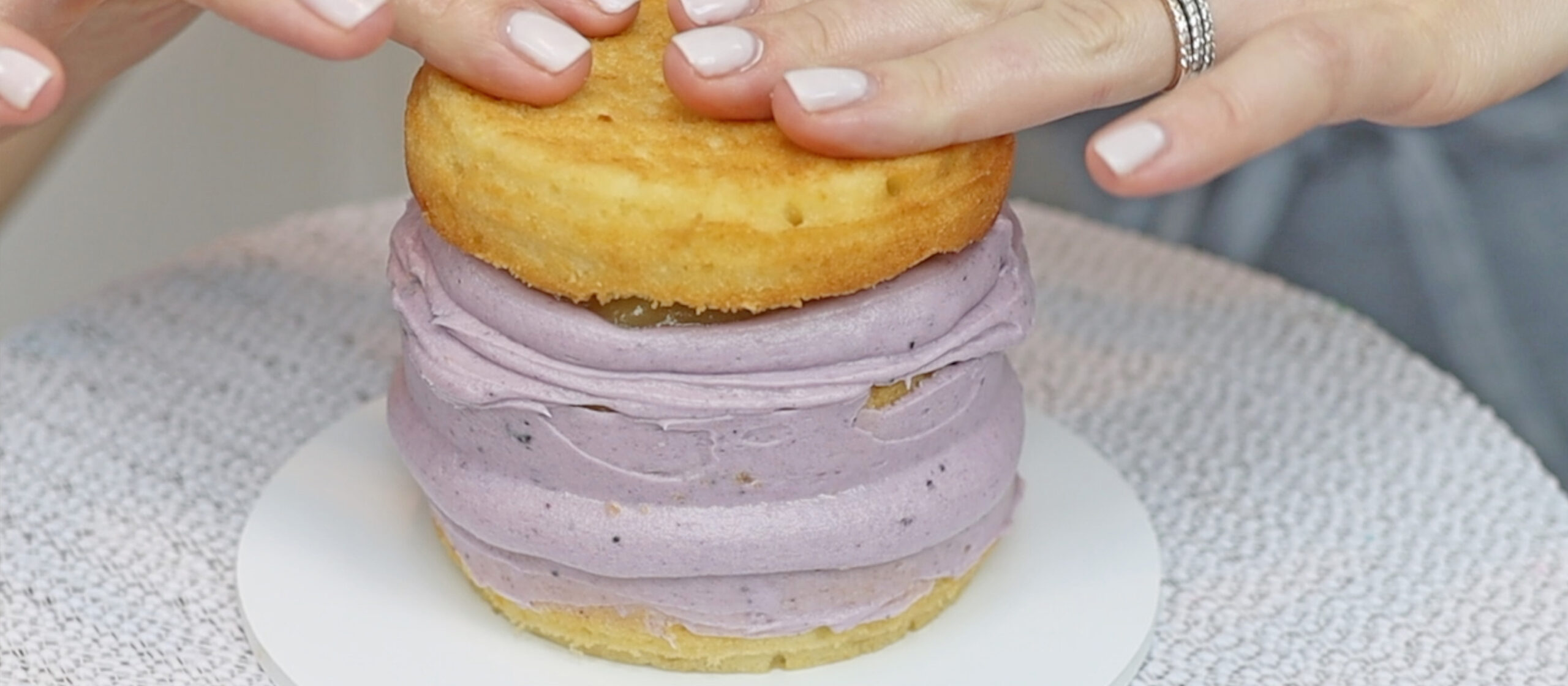
Buttercream bulging can spoil even the neatest frosting, leaving visible bumps between your layers and pushing out through the frosting. It’s a common issue in cake decorating but with some simple tips and tricks it’s easy to prevent bulges under frosting. In this tutorial I’ll explain what causes these bulges, when they’re most likely to appear, and the simple steps you can take to avoid them.
Buttercream bulges usually show up as rounded bumps around the sides of your cake, just underneath the frosting. These are most common after stacking cake layers with soft or runny fillings like jam, caramel, or lemon curd. As you continue to assemble your cake, the weight from the upper layers pushes down and the filling has nowhere to go except sideways. That’s how you end up with those unwanted cake bulges under frosting.
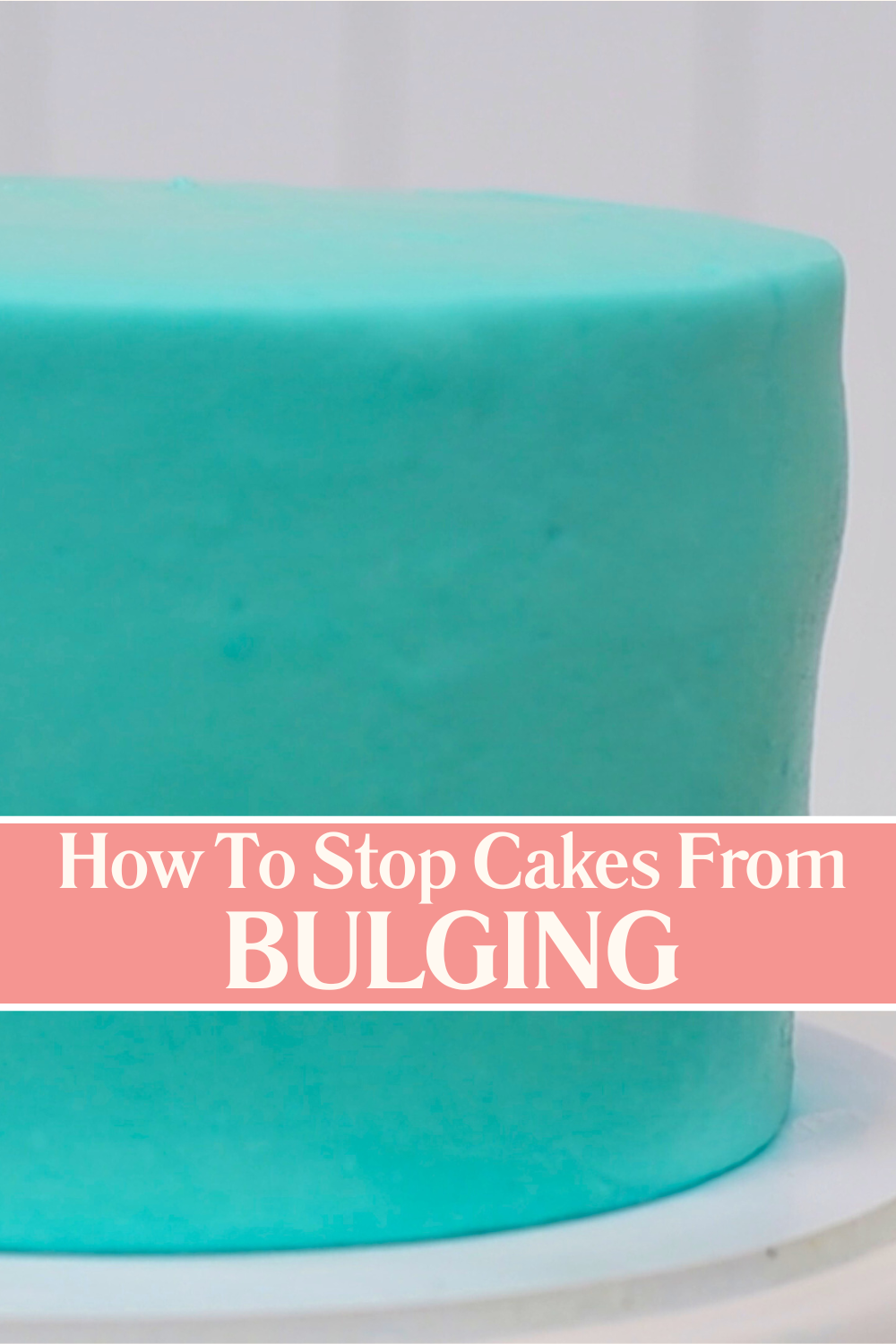
The best way to stop filling from oozing out of your cake is to start with a buttercream dam. This is a ring of stiff buttercream piped around the edge of each cake layer before adding the filling. It acts as a wall to hold your filling securely in place. This is especially helpful when using looser fillings like curds or sauces that don’t hold their shape well. A buttercream dam keeps everything contained so it doesn’t leak out and cause bulges.
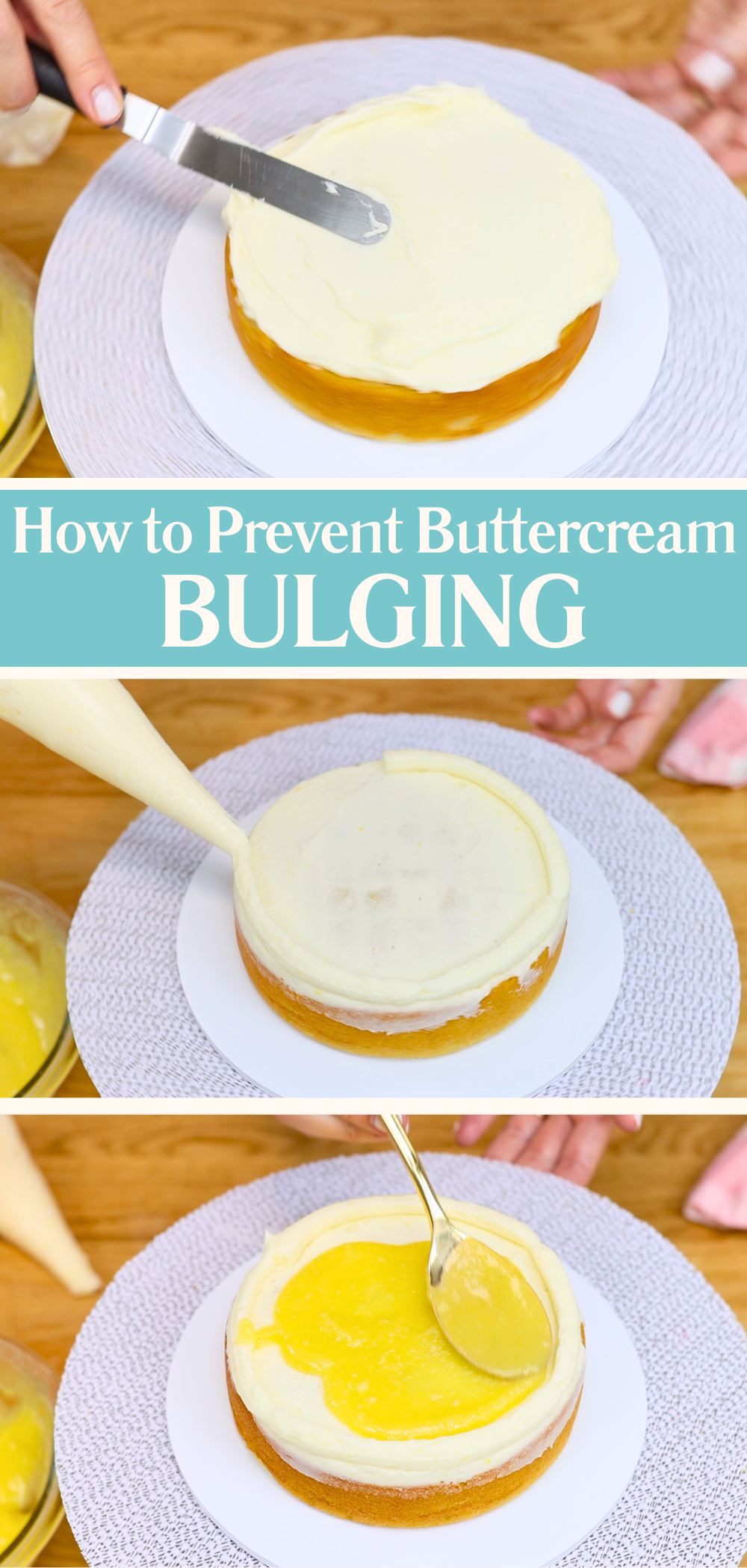
Here are my tips for successful buttercream dams that prevent buttercream bulging. First, your dam needs to be taller than your filling. If the filling comes right up to the top of the dam then as soon as you press the next cake layer down, it’ll squeeze the filling over the top of the wall. Once that happens, the filling starts creeping outward and eventually forms bulges under the frosting.
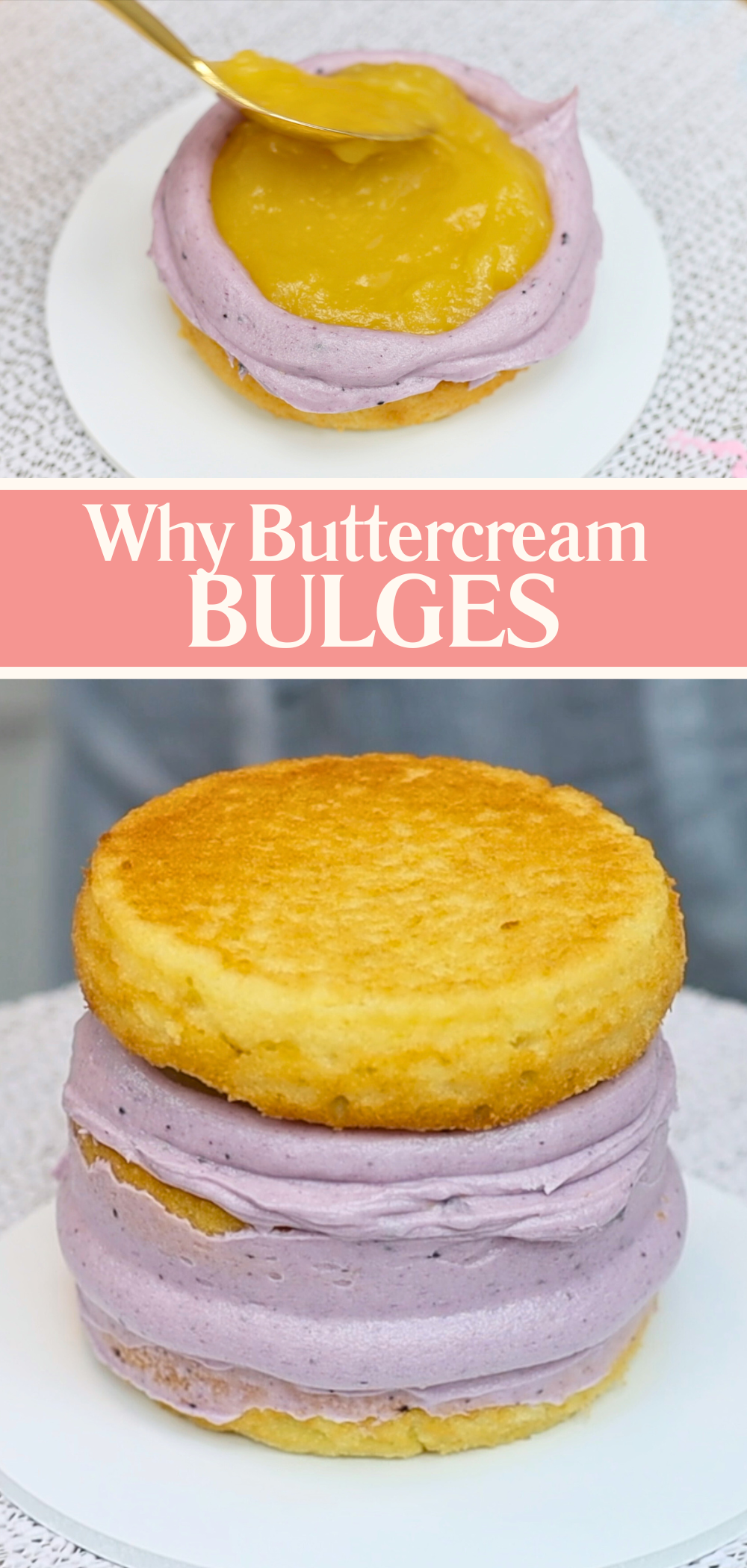
Secondly, make sure the buttercream you use for the dam is firm enough. If it’s soft like whipped cream or mousse, it won’t hold up under the weight of the cake. A stiff consistency is key here – check out my tutorial on buttercream consistency for more details on this.
As you build your cake, take your time with each step to make sure each layer is level and straight. This helps avoid extra pressure in certain spots that could cause bulges later. Pipe your buttercream dam around the edge of each cake layer and spoon in your filling so it stays well below the height of the dam. Gently press down on the next cake layer to check that the filling doesn’t spill out. Repeat until your cake is fully stacked.
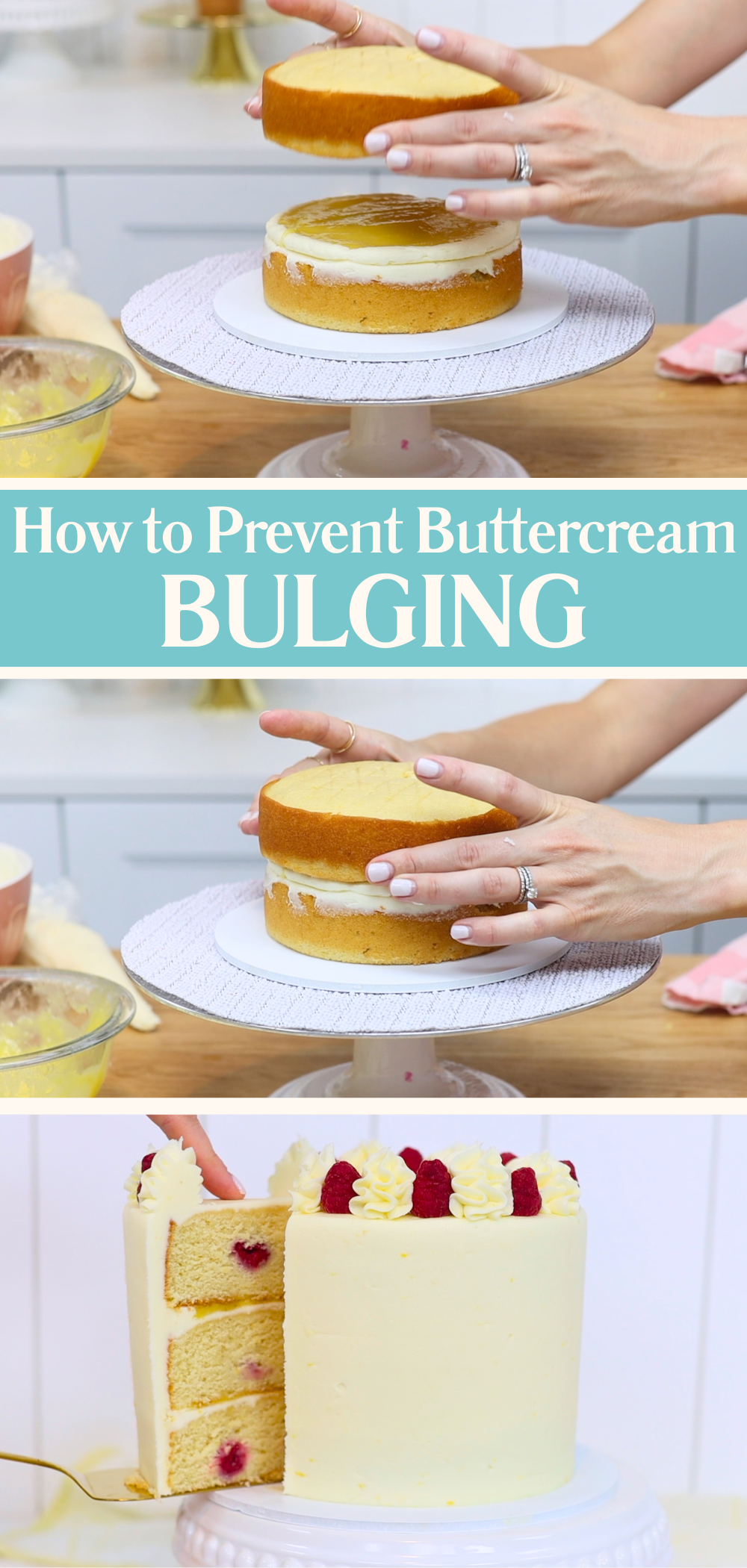
Even if your buttercream dams are tall and strong, they’re still soft when freshly piped. Don't move straight on to frosting your cake while everything is still at room temperature. If you do, the pressure of smoothing your crumb coat or final coat can nudge the cake layers sideways, leaving gaps where the filling can creep out.
That’s why chilling your cake before frosting is such an important step to prevent bulging. Once your cake is stacked, place it in the fridge for about an hour or the freezer for 30 minutes. This firms up the buttercream dams and the cake layers so that everything stays in place when you start frosting.
Sometimes no matter how careful you are, you’ll still spot a bulge sneaking out. Don’t worry! It's not too late to fix it. First, spin the cake to check that it's still stacked straight. If it’s leaning to one side, gently nudge it back into place with a spatula or palette knife. This can realign the layers and reduce some of the pressure that’s forcing the filling out.
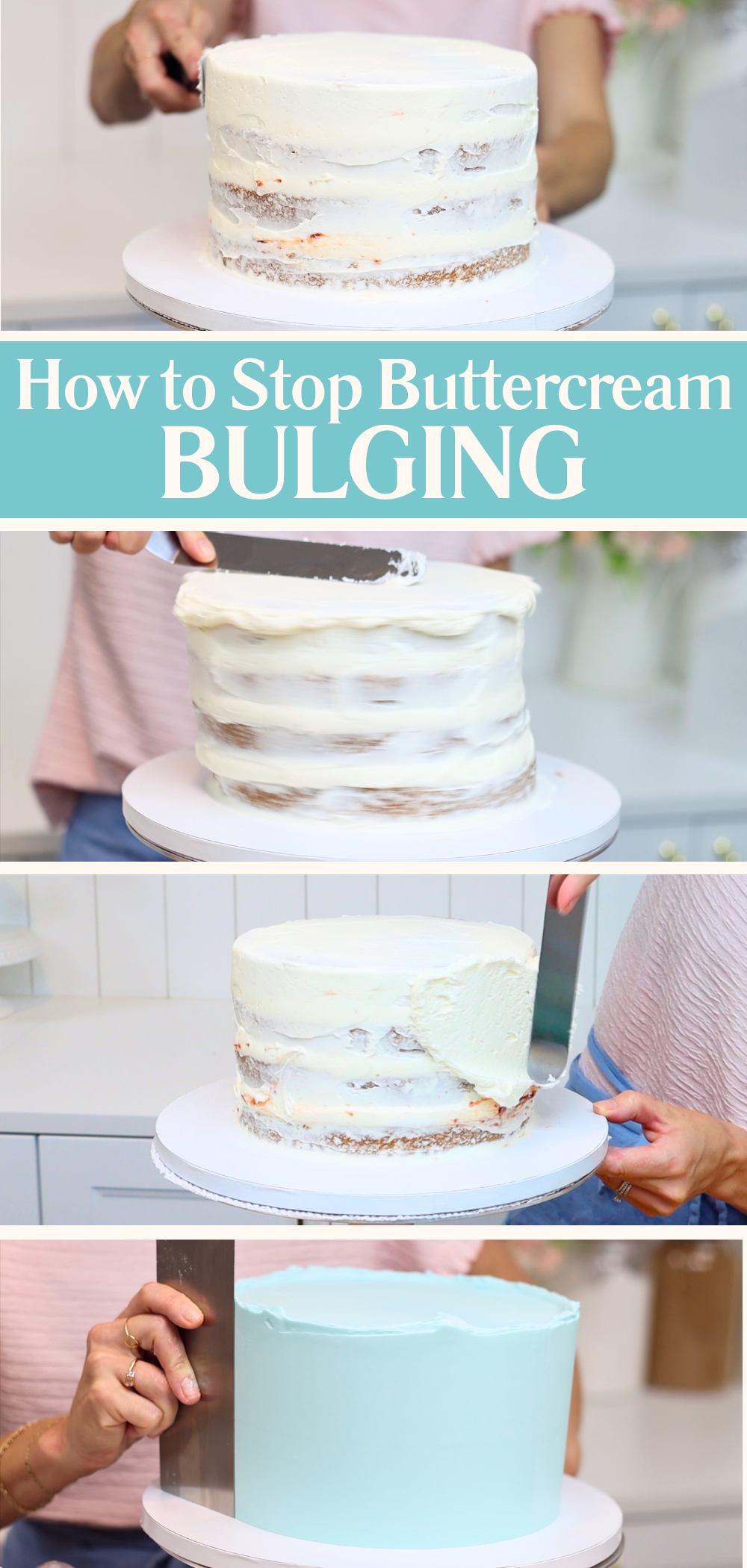
Next, put the cake in the fridge or freezer again. Give it time to set so the buttercream dam and filling firm up and stay in place. Then, spread on the crumb coat. Or, if you had already done the crumb coat when you noticed the bulges, add another layer of frosting now that the cake is chilled. This layer of buttercream helps trap any filling that may have escaped and gives you a clean base to work from. After chilling the crumb coat for about 15 minutes you can move on to your final coat of frosting.
With just a few simple techniques – using a buttercream dam, keeping your filling low, stacking cake layers evenly, and chilling the cake at key points – you can avoid frosting bulges and keep your cakes smooth. So next time you find yourself wondering, “Why is my buttercream bulging?”, you’ll not only know the answer, but exactly how to fix and prevent it.
When you're ready to take your cakes to the next level, visit my online cake school. You'll find courses to learn step-by-step techniques and designs made for cake decorators with any level of experience!
You can also watch a video of this tutorial on Why Is My Buttercream Bulging:
